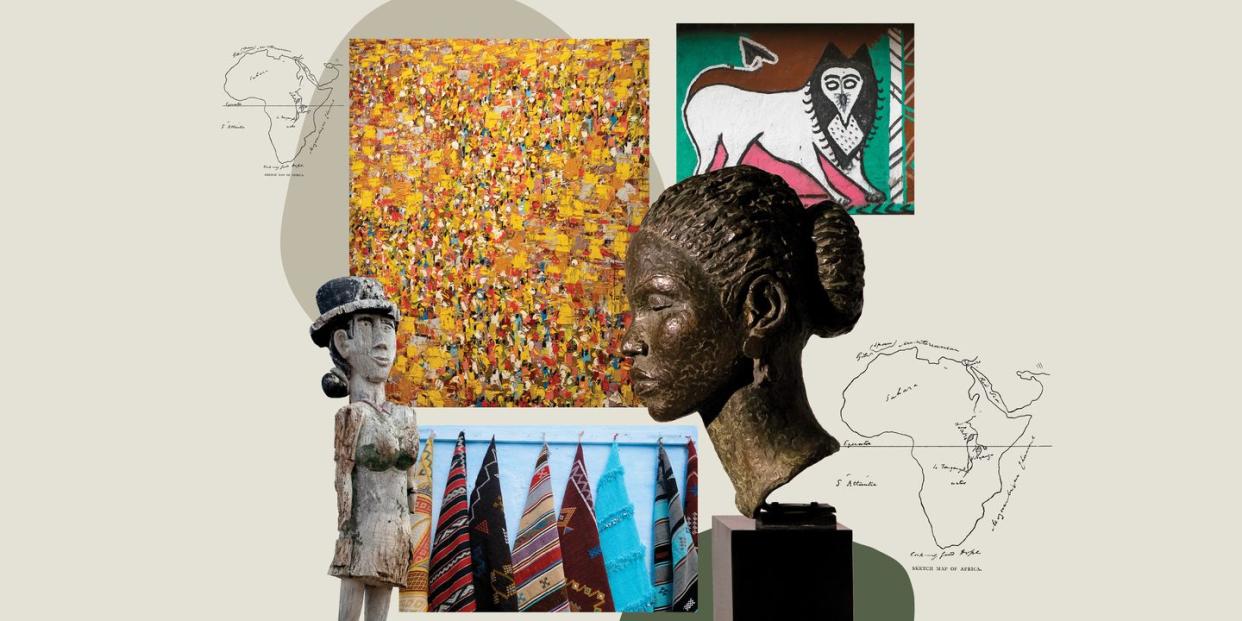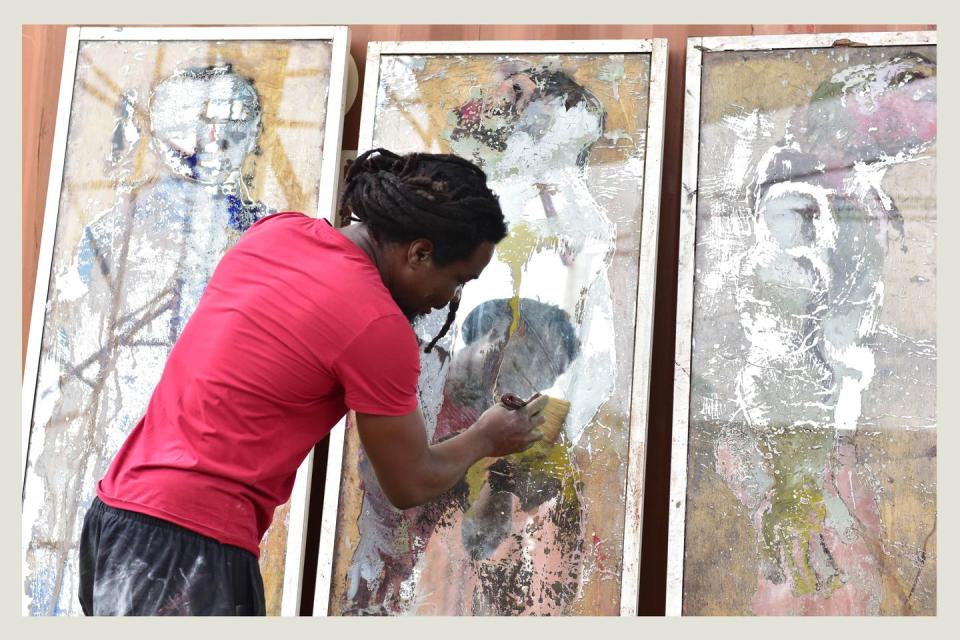Let's Stop Referring to “African Decor’ as One Style”

“Hearst Magazines and Verizon Media may earn commission or revenue on some items through the links below.”
Stop what you’re doing right now and Google “African Design.” Browse a few entries and click down a bit to see if you can find anything that is close to coherent. Don’t worry—I’ll wait...
My own search resulted in a gallery of kitsch fabric styles, moribund web pages from African design institutions like the African Design Centre and MOADJHB, and specious pontifications from non-Africans. A 2013 HuffingtonPost article didn’t mention a single country by name when its author wrote, “African design is founded in [sic] on Primitivism and is concerned with raw form, childlike lines, and references to wildlife, earthly hues and the color orange.” The entire continent just sighed with exhaustion.

Orange? Since when is Africa’s clock permanently stuck on sunset? For the record, “Primitivism” is a Western invention—not an African one. And common sense should tell you that very few Africans live on savannahs and nearly none do so with wildlife grazing in a backdrop of earthly hues. Yet, judging by the internet, this fiction is what most Westerners think Africa is. Americans should take this as a cautionary tale.
"Encapsulating the styles of 54 countries in one term is a stretch," explains Shila Abdula, an architect and interior designer from Mozambique. "African countries had different journeys throughout time and the impact of colonialism in the design evolution of each is often overlooked."
Instead, Abdula argues, what Americans define as "African Design" is often something conjured from Western imagination. "The term ‘African Design’ makes me think of objects and artifacts that are idealized and built using local resources (material and labor), and reflect the culture, traditions, and habits of a specific region," she says. "I feel Westerners may associate ‘African Design’ with tribal artwork, which is what is usually highlighted in most media.”
Zimbabwean writer NoViolet Bulawayo said it best with the title of her 2013 debut novel, “We Need New Names.” The same is true for the term “African Design,” which reduces the multitude of aesthetics found across the 46 countries in subsaharan Africa to just a few export-driven motifs from tourist art found in a few well-known countries, namely South Africa, Ghana, and Nigeria. If we extend our gaze to include the Sahel, for example, we can consider eight more countries that further expand the diversity of designs and patterns to include Persian, Arab, and Bedouin influences. Yet, from across the Atlantic Ocean, grossly inaccurate statements about Africa, Africans, and cultural productions originating from the continent are all too common. This is precisely why African creatives and designers have decided to tell their own stories, through online spaces, like ArchiMoz a Portuguese-language website for designers and architects in Mozambique, and the satirically named, Africa is a Country, the South-Africa based research-hub that uses creators on the continent to document the diverse contemporary cultural production of each country.

Kevin Wainaina of Nairobi-based architectural firm IntrigAfrica adds, “Most westerners tend to think of Africans as one large collective community with the same culture, yet there are many tribes in Africa and each tribe has its own identity. For example, Kenya alone has 43 tribes and each tribe has its own culture, which influences its design perspective. African design cannot be summed up to a term or style. It is vibrant and dynamic depending on the location and community. There is no defined African design language, hence designers should pick from different cultures and blend them to create their own authentic style."
For consumers, Abdula advises a “search for specific countries and reaching out to local architects, design ateliers, and furniture stores.” But she cautions that the internet has its limitations. Of course, the results are only as good as the keywords used. Luckily, you’ve already ruled out “African Design.” While you’re at it, ditch “tribal” and “ethnic” too. These overused words can be pejorative and simplistic, especially when they’re used as euphemisms for Africa. Every country in the world has local cultures and art elements that define its geographies. The key is to identify the appropriate words to describe the specific style you seek.

Over 2,000 languages are spoken on the African continent, making an English-language search a blunt filter. Image heavy Instagram might be a better place to browse design elements that appeal. Buyers can dig deeper into the country of origin and engross themselves in modern experiences from contemporary creatives without saying a word. The photos and the products will speak for themselves, making it that much easier to finally stop using "African Design” to describe the plethora of bespoke installations made by people living on the mother continent.
Follow House Beautiful on Instagram.
Nafeesah Allen is an independent researcher with an interest in literature, gender, and diaspora studies in the global South. In 2019, she completed her Ph.D. in Forced Migration from the University of the Witwatersrand (Wits) in Johannesburg, South Africa. She leads BlackHistoryBookshelf.com, a book review website that highlights global Black histories organized by language, theme, and country. Follow her on Twitter or Instagram @theblaxpat.
You Might Also Like


